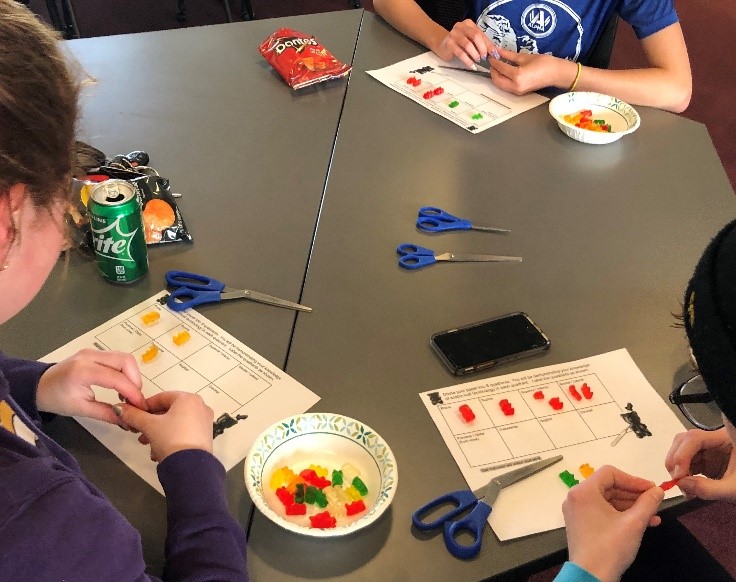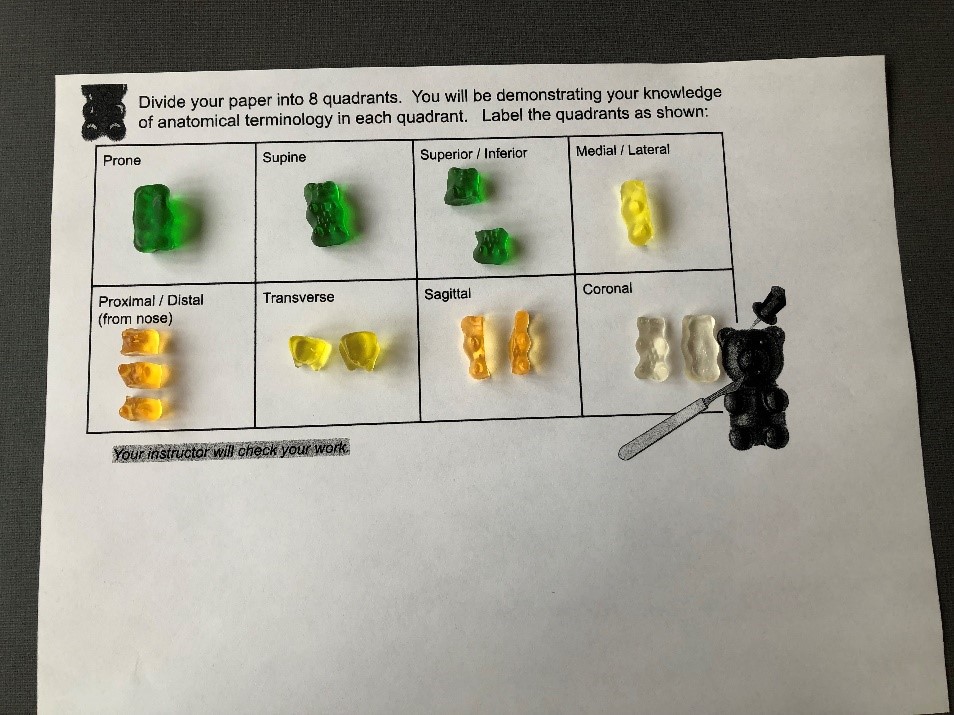2021-22 PreK-12 SI Roadshow Highlights
Snowy Range Academy (In-Reach) - Laramie
On October 28th, 36 third grade students from the Snowy Range Academy in Laramie came to visit Jamie Crait’s Scientific Communication course. The university students spent time in class developing and practicing interactive outreach activities relevant to third grade curriculum ranging from engineering to cell membranes, chemistry, ecology, and astronomy. The third grade students had a blast coming to campus and interacting with the undergraduate students while learning and applying science knowledge to interactive demonstrations. This cross-level learning opportunity allowed the undergraduate students to gain experiential expertise in scientific communication through the development and implementation of outreach curricula, while the younger students were able to expand their scientific understanding of concepts they have been learning in the classroom.
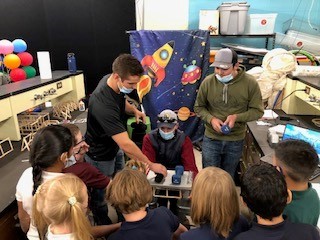
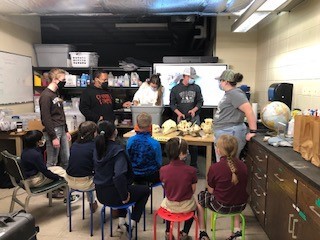
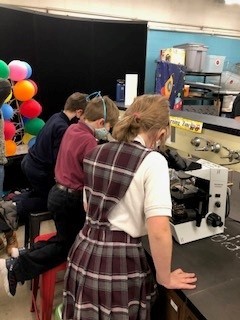
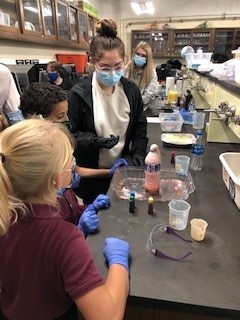
Skyline Academy High School - Pinedale
On December 1st, the Roadshow visited Skyline Academy High School, an alternative school in Pinedale, Wyoming. Justin Kinney and Sarah Zekovich, undergraduate students at UW majoring in Microbiology, lead the outreach. The students at Skyline Academy were learning about local environmental issues. To build on their learning, Justin and Sarah designed a hands-on activity based on their microbiology capstone research investigating the harmful cyanobacterial blooms occurring in the waters across Wyoming. The students started by sharing what they currently know about cyanobacteria then watched a short video created by the capstone students explaining their project and the local relevance. The students were then able to look at cyanobacteria from West Granite Springs through the microscope and draw what they were seeing. The high school students were then able to run their own DNA gel so they could visualize a plasmid that contains the gene coding for the toxin. Lastly, the students were able to create their own wet mount slides from water taken from the Pine River that runs through Pinedale to look for cyanobacteria.
Roadshow Team:
Justin Kinney (Undergraduate Student Microbiology)
Sarah Zekovich (Undergraduate Student Microbiology)
Karagh Brummond (Faculty Science Initiative & Honors College)
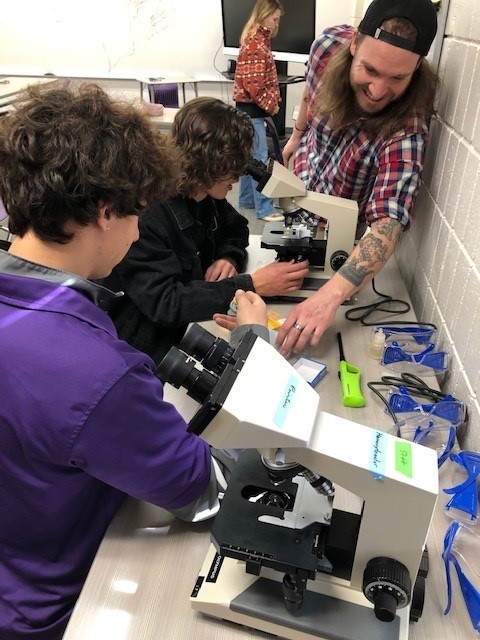
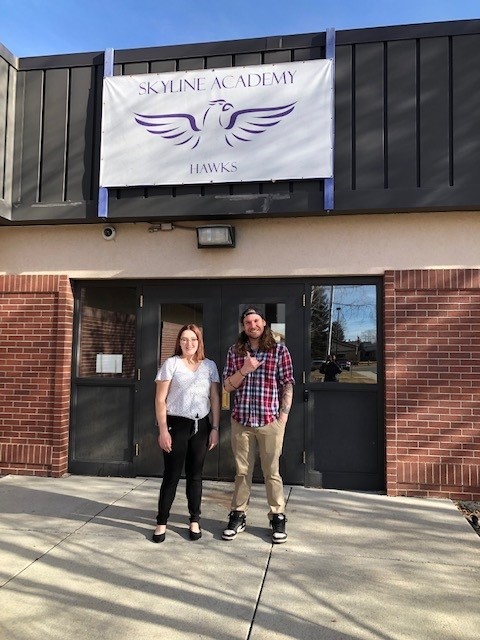
YMCA Afterschool Program - Sheridan
On February 17th, the Roadshow traveled to Sheridan, Wyoming to visit with the K-5th grade students at the YMCA afterschool program. Forty-two students attended the afterschool program that afternoon and were greeted by an enthusiastic Roadshow team to teach the kids about the local issue of ungulate migration across roadways in Wyoming. The students first learned about ungulates and their migratory routes through our state. They were then asked to take on the challenge of designing their own way to help animals migrate while also allowing for the road infrastructure needed to allow cars to drive across Wyoming. The students divided into groups and collaborated to design their own novel passageway for animals and cars. The students were given building materials donated from the University of Wyoming Makerspace and had to demonstrate how their structure allowed an animal and car to safely pass. The students’ structures were then put to the test to withstand the Wyoming weather including high winds that affect the state by turning on a hairdryer at full blast. At the end, students were able to reflect on their experience by sharing what they learned from the activity by writing and/or drawing.
Roadshow Team:
Austin Bernard (Undergraduate Student Mechanical Engineering)
Elizabeth Lungren (Undergraduate Student Animal and Veterinary Sciences)
Alicia Thoney (Undergraduate Student Computer Science)
Aeriana Roth (Undergraduate Student Electrical Engineering)
Svetlana Sergojan (Staff Science Initiative)
Greg Brown (Faculty Science Initiative & Botany)
Karagh Brummond (Faculty Science Initiative & Honors College)
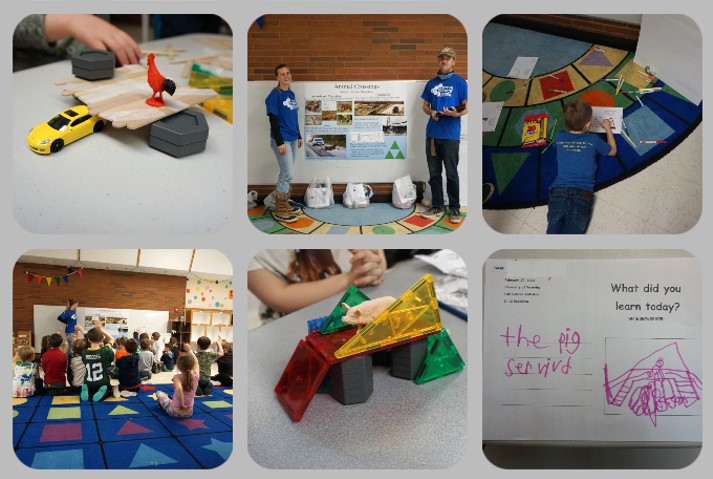
Riverton Middle School - Riverton
On March 1st, the Roadshow team spent the day at Riverton Middle School teaching the students in the English & Language Arts classes about the brain. The Roadshow students spent the lunch hour with a group of students enrolled in the Mendi Study (a current collaboration between the Riverton Middle School and Roadshow director Karagh Brummond). During this lunch hour, the students learned about the role of feedback in the body and why it is important. The students then explored how the technology of Mendi works by doing a mini-experiment using a pulse oximeter to measure heart rate and oxygenation before, during, and after an activity.
After lunch, the Roadshow team was able to visit with three separate English/Language Arts classes where 61 students learned more about how the brain works. The students learned about the different lobes of the brain through interactive stations where they were able to test their memory, see how neuroprosthetics limbs work, compete against one another in the stroop test, play memory games, and see the brains of different animal species. The students wrapped up their brain learning experience with some optical illusions.
Roadshow Team:
Quiana Jeffs (Graduate Student Neuroscience)
Sarah Greger (Undergraduate Student Kinesiology)
Karagh Brummond (Faculty Science Initiative & Honors College)
When the students were asked about what they like about the presentation by the Roadshow they responded:
- “I really like how they showed the four parts of the brain and what senses it is.”
- “I really liked, it was fun.”
- “I like how we got to learn”
- “I liked that I got to learn about brains because before I kinda new nothing about brains.”
- “It was a great time”
- “The parts of the brains”
- “What I liked about it was how you showed what each part of the brain was and what it worked in our bodies.”
- “Some things that I learned were there are four brain lobes”
- “I liked the way they explained every question really well”
- “I learn that the brain weighs 3 pounds.”
- “I like about the presentation by the U.W Brain Science specialists was the robotic arm because it was fun also I did not know you can control it just with your arm.”
- “I liked about the presentation by the UW Brain science specialists was the robotic arm because it’s fun to use and also it was my first time using one.”
- “I learned that a brain has billions of brain cells”
- “It was a really fun experience.”
- “The bran is a big thing”
- “Thanks that was fun”
- “I would like to tell the all of the ladies who came thank you for coming down here to come and teach us about the brain.”
- “I would like to tell the ladies it was fun I would like to be a brain science specialists one day to.”
- “I would like to tell the ladies it was fun I would want to do that stuff again.”
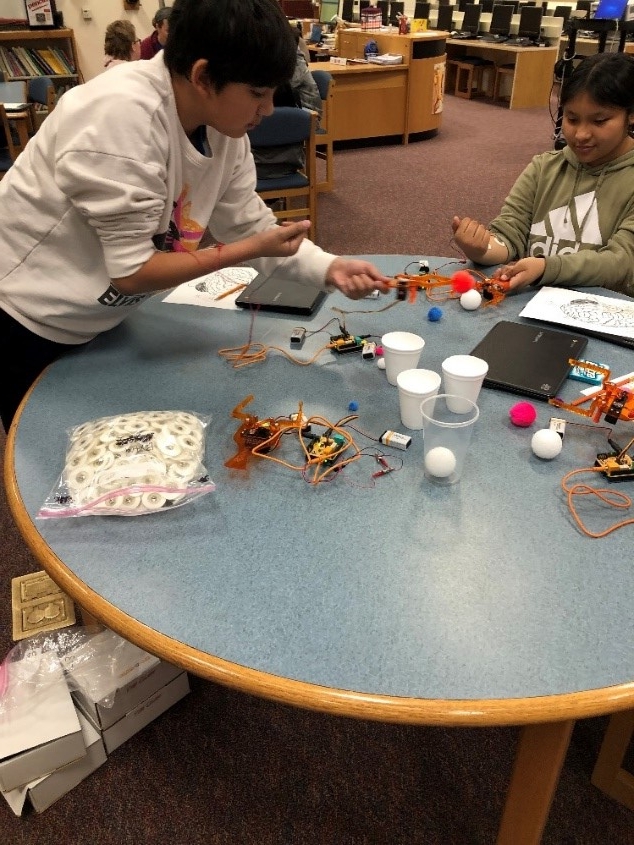
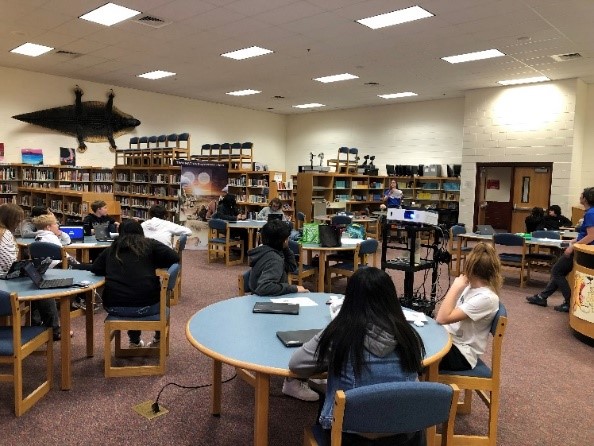
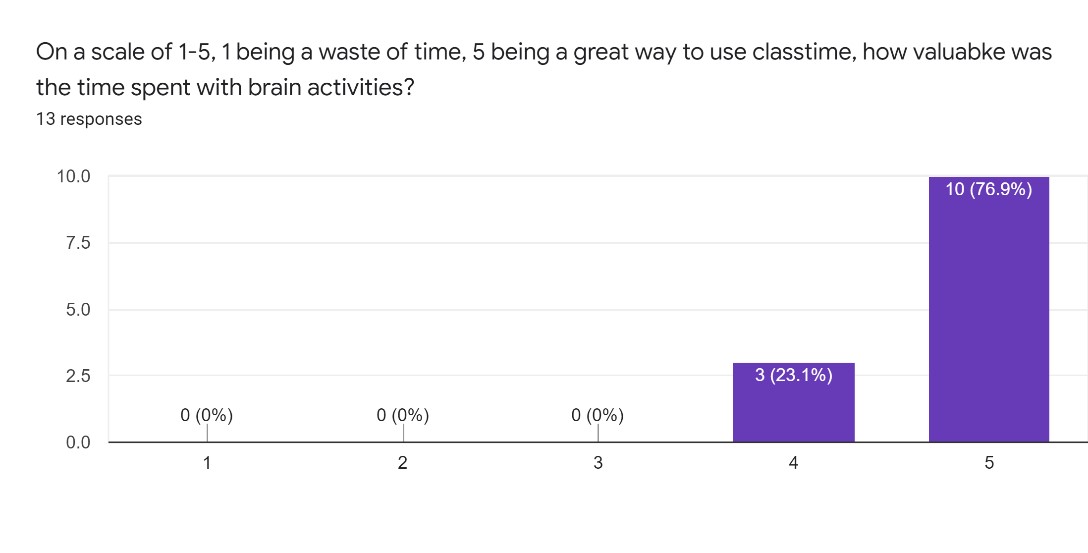
Cody Middle School - Cody
On Thursday, March 3rd, the Roadshow visited with the 6th grade Physics students at
the Cody Middle School. The 100 middle school students had just finished learning
about Newton’s first and second laws of motion, and the Roadshow was asked to develop
some hands-on activities to supplement what they had learned. The students started
by seeing some demonstrations, which displayed and reviewed the properties of Newton’s
first and second laws of motion. The students then broke into groups to perform their
own experiment. They were given cars with different weights, a meter stick, and a
ramp. The students were then asked to create a table to track the time it took each
of the cars to travel a certain distance down the ramp. They performed their experience
numerous times so they would be able to take averages of their data. The students
then spent time the next week in their math class analyzing their data and verifying
Newton’s laws.
Roadshow Team:
Austin Bernard (Undergraduate Student Mechanical Engineering)
Tabatha Spencer (Staff Science Initiative)
Max Packebush (Undergraduate Student Molecular and Microbiology)
Kalley Collins (Undergraduate Student Anthropology)
Karagh Brummond (Faculty Science Initiative & Honors College)
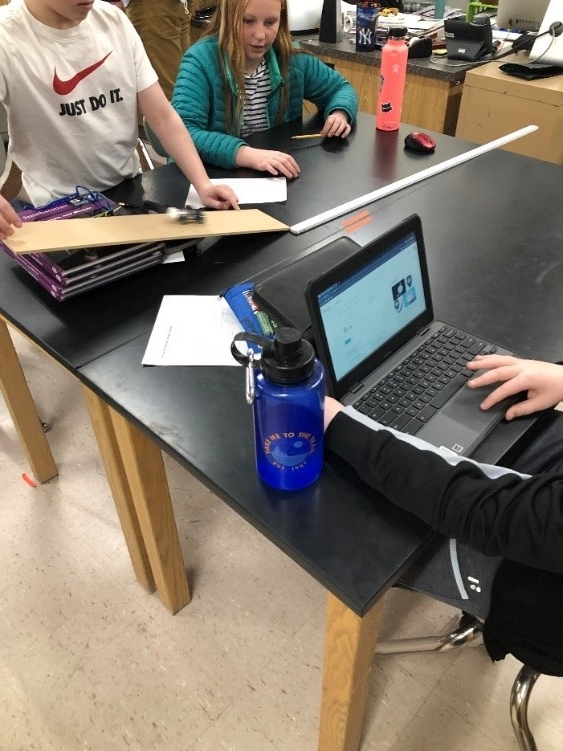
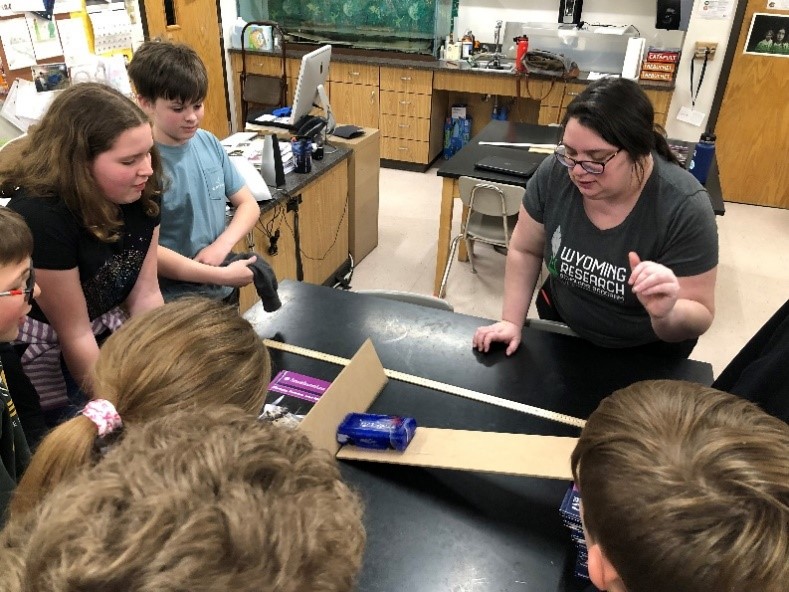
Cheyenne Central High School - Cheyenne
On March 9th the Roadshow took to I-80 to visit with the Cheyenne Central High School Psychology students to do some hands-on neuroscience activities. The 60 psychology students began by hearing about some ongoing neuroscience research happening on the UW campus by graduate students working on their PhD. The students then tested their knowledge about the brain in an interactive Kahoot game before taking time to review the major parts of the human brain they learned about in class. The students were then able to take part in interactive activities related to each area of the brain including memory games and brainteasers, balance and visual testing with prism goggles, miracle berries changing their sense of taste from sour to sweet, and using the electrical impulses from their brain to their muscles to operate a robotic claw. There was also the opportunity to see actual brain specimens from different animal species and a discussion about the comparative differences the students observed between each one. The class period ended with some fun optical illusion that had everyone questioning their brains!
Roadshow Team:
Quiana Jeffs (Graduate Student Neuroscience)
Austin Bernard (Undergraduate Student Mechanical Engineering)
Elizabeth Lungren (Undergraduate Student Animal and Veterinary Sciences)
Karagh Brummond (Faculty Science Initiative & Honors College)
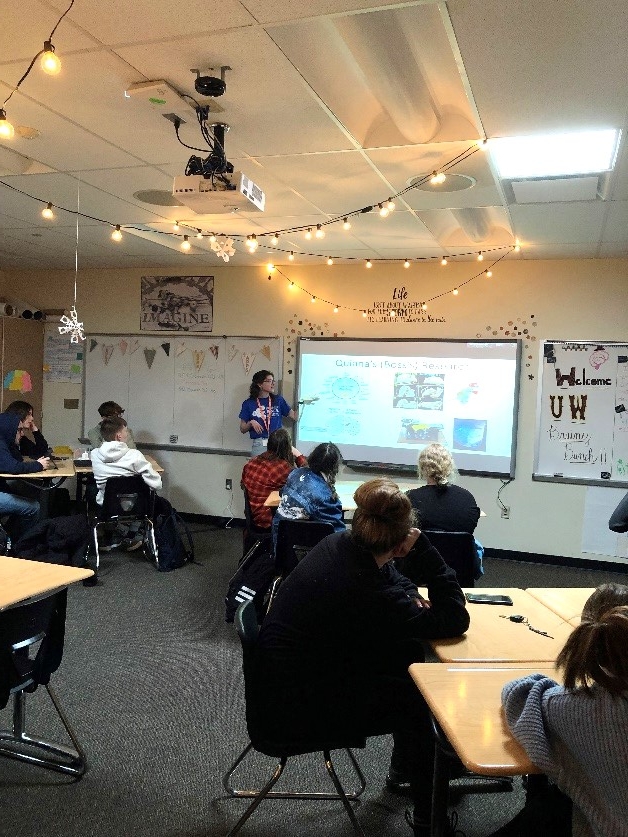
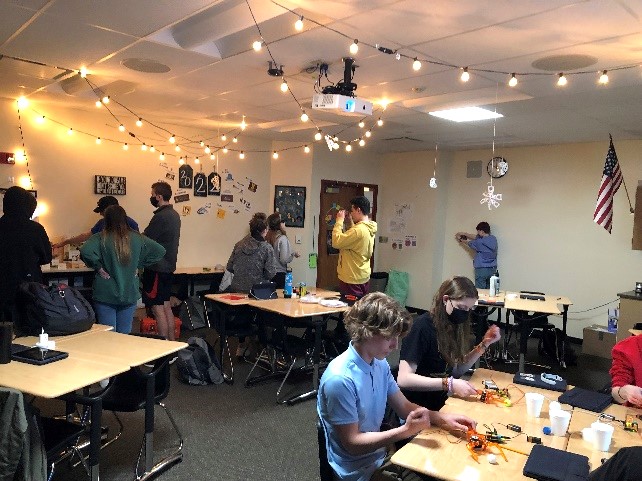
Laramie High School - Laramie
On March 29th and 30th the Roadshow stayed local and visited with the Laramie High School Psychology students to do some hands-on neuroscience activities. The Roadshow was able to build off the previous high school psychology outreach in Cheyenne. In Laramie, the 103 psychology students began by hearing about some ongoing neuroscience research happening on the UW campus by graduate students working on their PhD and even heard about some non-neuroscience research being performed by undergraduates at the University. The students then tested their knowledge about the brain in an interactive Kahoot game before taking time to review the major parts of the human brain they learned about in class. The students were then able to take part in interactive activities related to each area of the brain including memory games and brainteasers, balance and visual testing with prism goggles, miracle berries changing their sense of taste from sour to sweet, and using the electrical impulses from their brain to their muscles to operate a robotic claw. There was also the opportunity to see actual brain specimens from different animal species and a discussion about the comparative differences the students observed between each one. The class period ended with some fun optical illusion that had everyone questioning their brains!
Roadshow Team:
Quiana Jeffs (Graduate Student Neuroscience)
Kathryn Sandum (Graduate Student Biomedical Sciences)
Skylar Hodgins (Undergraduate Student Psychology)
Kinsale Day (Undergraduate Student Geography)
Max Packebush (Undergraduate Student Molecular and Microbiology)
Austin Bernard (Undergraduate Student Mechanical Engineering)
Elizabeth Lungren (Undergraduate Student Animal and Veterinary Sciences)
Karagh Brummond (Faculty Science Initiative & Honors College)
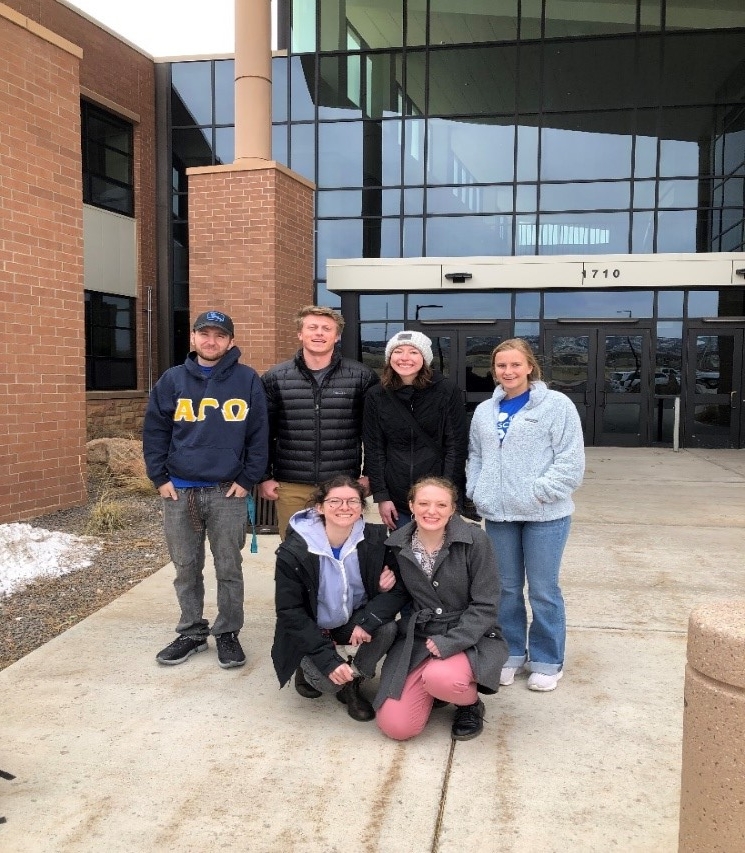
Teen Science Café: Computer Science - Laramie
In collaboration with the Wyoming Afterschool Alliance and the Teen Science Café Network, the Roadshow has been able to start up local Teen Science Cafes for the Laramie area. The first Teen Science Café was hosted by Ashleigh Pilkerton who organized a café on the topic of Computer Science on Saturday, April 2nd. Six teens from the Laramie area participated in the café where they were able to hear first about Ashleigh’s scientific journey and current role as a graduate student in the UW Wyoming Cooperative Fish & Wildlife Research Unit. The students then talked a human robot through the art of making a PB&J sandwich. From this activity, the students learned about the necessity to be precise in coding and how coding requires specific features to make sure the “robot” or other interface performs the command as intended. The students then received a tour of the EERB Makerspace on campus where undergraduate student Zachary Woith walked them through the process of 3D printing and the use of G-Code.
Roadshow Team:
Ashleigh Pilkerton (Graduate Student Wyoming Cooperative Fish & Wildlife Research Unit)
Katie Davis (Graduate Student Ecology)
Karagh Brummond (Faculty Science Initiative & Honors College)
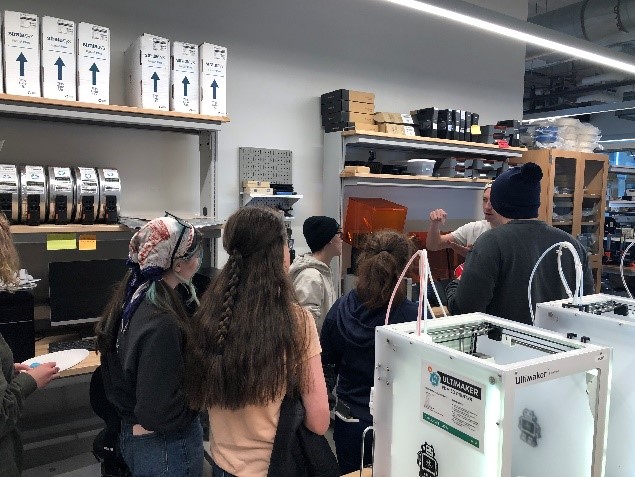
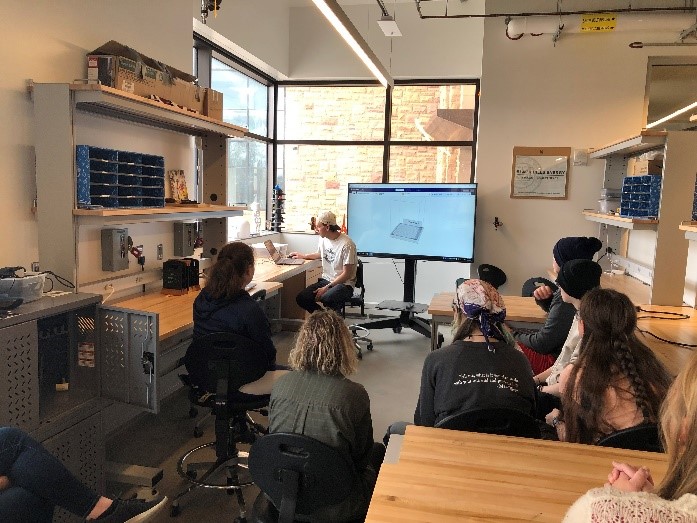
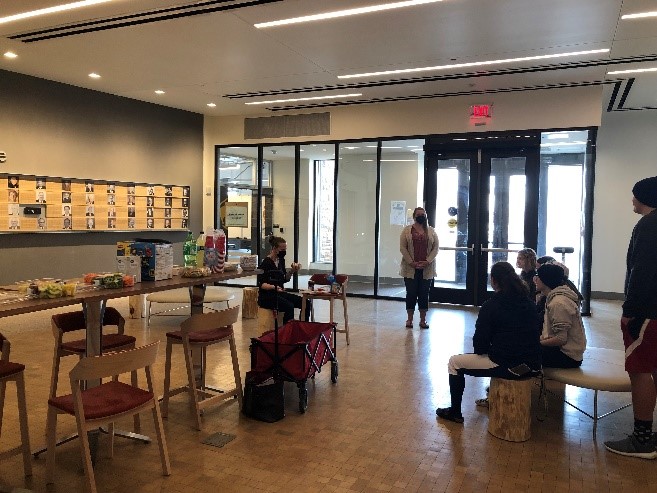
Teen Science Café: Salamander Migration - Laramie
The second Teen Science Café on Saturday, April 9th allowed the teens to take part in the Salamander Saturday program hosted by the Berry Center and Salamander Migration Initiative at UW. The students were able to attend the Salamander Biology Seminar presented by Melanie Torres, a graduate student in the UW Program in Ecology, and then tested their knowledge in a round of Salamander trivia. The four teens took first place in the trivia competition winning some reusable chopsticks from a company that donates all their profits to the protection of Salamanders. The teens then took advantage of a number of hands-on stations around the Berry Center related to the initiative.
Roadshow Team:
Katie Davis (Graduate Student Ecology)
Karagh Brummond (Faculty Science Initiative & Honors College)
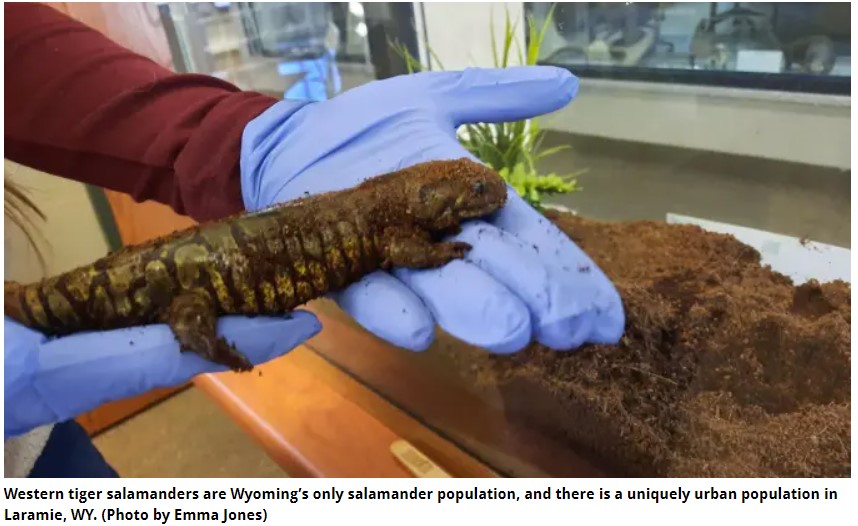
Teen Science Café: Astronomy - Laramie
Five teens from Laramie enjoyed a Teen Science Café on Saturday, April 16th on the topic of Astronomy by Planetarium coordinator Max Gilbraith. The students were able to learn about Max’s STEM journey through interactive photos and videos on the big screen in the Planetarium. The students were able to view amazing footage of the 2017 eclipse captured by a ballooning project by Gilbraith and then learned about the stars and planets they can see in night sky that night. Students asked many questions and enjoyed their private show!
Roadshow Team:
Katie Davis (Graduate Student Ecology)
Karagh Brummond (Faculty Science Initiative & Honors College)
Laramie High School Earth Science
The Roadshow visited with 180 students in the Earth Science classes at Laramie High School on April 21st to do hands-on activities related to ocean acidification to supplement the classroom content on climate change. Students were able to perform interactive activities to explore the role the ocean plays as a carbon sink for atmospheric carbon dioxide and the long-term implications of this increased carbon. Students began class by classifying photos as carbon sources or sinks to gain a better understanding of the global carbon cycle. We then expanded on the activity to introduce the ideas of acidification by having students use pH paper to test the pH of varying household solutions and local water sources. We then linked the ideas of carbon and pH by having students blow through straws into a small solution of water containing Phenol Red as a pH indicator. The students were able to observe in real-time how carbon dioxide can change the pH of the solution and specifically show how the pH becomes more acidic as carbon dioxide is added into the solution. We then simulated a larger, more concentrated burst of carbon dioxide by using a carbon dioxide cartridge to blast CO2 into a large container of water with Phenol Red. The last activity we did to demonstrate the impacts of ocean acidification had students measure the mass of a shell that was soaking in vinegar, an acidic solution, for the duration of their class period. We also measured the mass of a shell placed in water as a control. Students took mass measurements throughout the class period and across periods during the school day (see photo for results). We then wrapped up the real-world implications for the students through a discussion on the tangible changes we can take in Wyoming to help with this feature of climate change.
Roadshow Team:
Quiana Jeffs (Graduate Student Neuroscience)
Kathryn Sandum (Graduate Student Biomedical Sciences)
Kinsale Day (Undergraduate Student Geography)
Max Packebush (Undergraduate Student Molecular and Microbiology)
Austin Bernard (Undergraduate Student Mechanical Engineering)
Elizabeth Lungren (Undergraduate Student Animal and Veterinary Sciences)
Sarah-Anne Leverette (Graduate Student English)
Karagh Brummond (Faculty Science Initiative & Honors College)
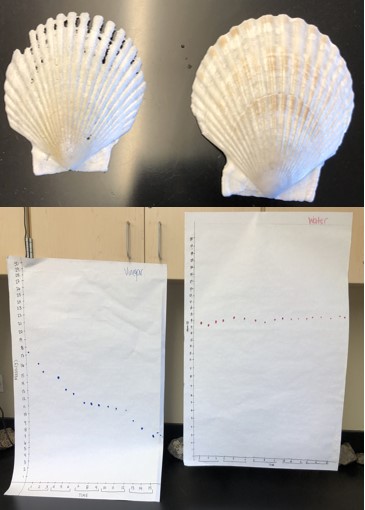
Teen Science Café: Neuroscience - Laramie
Six local teens engaged in learning about the field of neuroscience led by Karagh Brummond, faculty in the Honors College and leader of the Roadshow. On Saturday, April 30th students were able to learn about the general parts of the brain and how neurons of the brain communicate through an interactive activity about the Zombie Apocalypse! Students used the information about the brain and neurons to create a novel drug therapy to cure the zombies. We then took a local field trip to the 3D Visualization Center on campus to actually dive into the human brain and see the brain regions and features we learned about in the zombie activity in a 3D, realistic way.
Roadshow Team:
Katie Davis (Graduate Student Ecology)
Karagh Brummond (Faculty Science Initiative & Honors College)
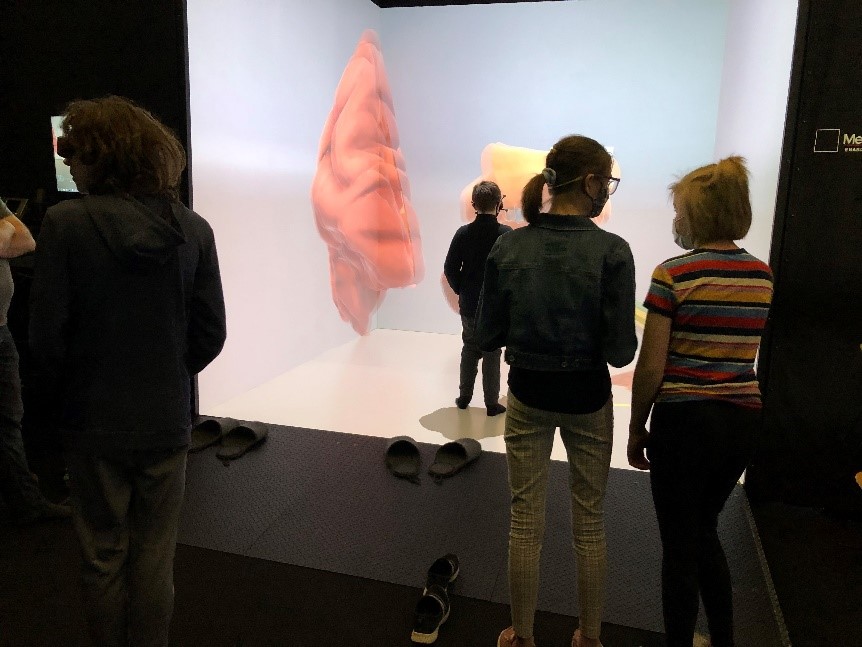
Skyline Academy High School - Pinedale
The Roadshow received a 2022 Markow Grant from the Wyoming Native Plant Society to fund a multi-day trip to Skyline Academy in Pinedale to teach high school students about the importance of trees, a topic and learning outcome of their curriculum. Mark Lyford and Karagh Brummond coordinated with Lori Moore, the science teacher at Skyline Academy, to develop and implement the field-based research curriculum on May 2-3rd. Students spent the first day in the classroom connecting concepts related to how Wyoming vegetation is linked to global systems like the Carbon cycle. Students were able to learn about the anatomy and physiology of trees and link that information by determining the age of trees and making rough measures of tree ring size to build an understanding of the relationship between climate, tree growth, and how growth relates to carbon uptake and storage.
On the second day, the students took a local field trip to the base of the Wind River Range to estimate the amount of carbon storage in a local forest and learn about some basic methods used in ecological field studies. The students learned how to take transects to estimate the number of trees and measured tree diameter to help estimate the amount of carbon storage. We then returned to the classroom and performed some calculations to draw conclusions from our research experiment linking the discussion back to the importance of trees.
Roadshow Team:
Mark Lyford (Faculty Botany & Science Initiative Program Director)
Karagh Brummond (Faculty Science Initiative & Honors College)
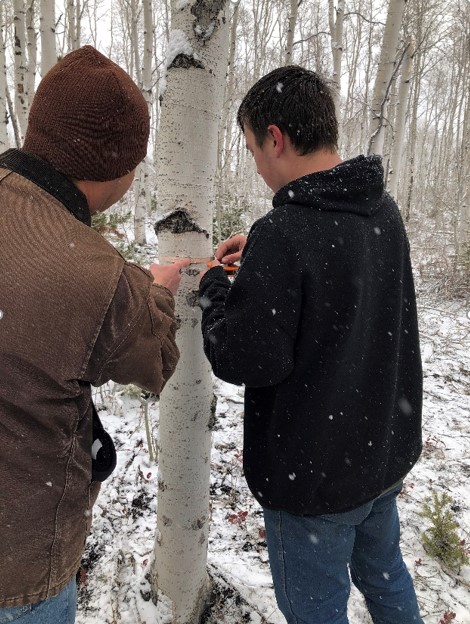
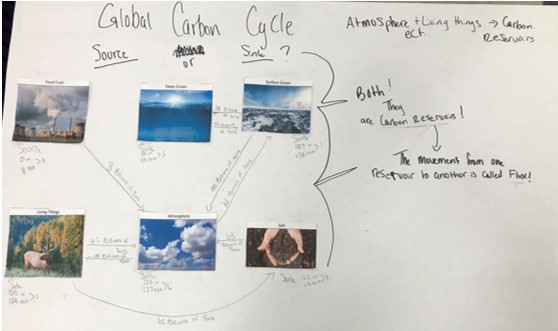
Women in STEM Conference - Laramie
The Roadshow participated in the NASA Space Grant’s Women in STEM conference for Wyoming girls to learn about varying science fields on May 17th. The Roadshow offered three workshops on neuroscience as part of this conference reaching 74 Wyoming students from 15 different schools. The neuroscience workshop involved a multidisciplinary exploration of neuroscience in light of neuroprosthetic limbs. Students built a neuroprosthetic limb during the workshop and then were able to control that prosthetic with their own neural signals. In this set up, when the students moved their arms, it moved the prosthetic hand in an identical way.
Roadshow Team:
Quiana Jeffs (Graduate Student Neuroscience)
Kathryn Sandum (Graduate Student Biomedical Sciences)
Skylar Hodgins (Undergraduate Student Psychology)
Karagh Brummond (Faculty Science Initiative & Honors College)
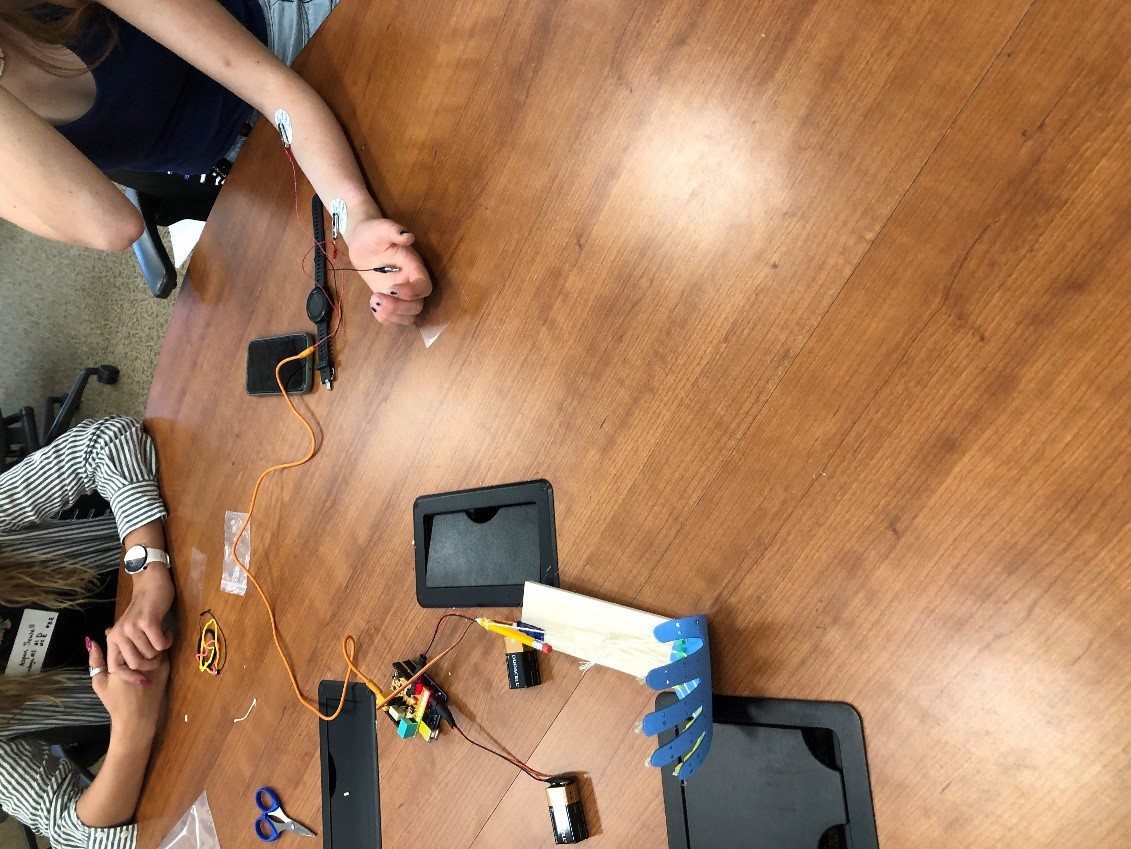
Snowy Range Academy - Laramie
On May 18-20th, 8 UW researchers and 22 Snowy Range Academy students collaborated on four field-based research projects in Curt Gowdy State Park. The Snowy Range Academy 5th grade students were learning about the scientific method in their science class and the teacher, Diane Cook, reached out to the Science Initiative Roadshow to collaborate on an interactive, hands-on activity to put the scientific method into action!
Students were divided into four research teams led by UW faculty, graduate and undergraduate students to perform hands-on field research in Curt Gowdy State Park over three consecutive school days. Students began their multi-day research project by hiking with their research teams and making observations related to their research questions. By the end of the first day, students identified their research questions and generated hypotheses based on their observations. On the second day, students were back in the field with their UW researchers collecting data on their research questions. The final day of the research outreach was spent at Snowy Range Academy where students and researchers came together to work on data analysis, drawing conclusions, and creating poster presentations. The students then presented their research findings to their classmates, researchers, teacher, principal, and parents.
Snowy Range Academy 5th grade teacher, Diane Cook, was very pleased with the Roadshow collaboration stating: "working with the Outreach program, Science Initiative allowed my fifth-grade class the opportunity to learn about the scientific method in a hands-on and meaningful way. Experts were provided so students were able to ask more difficult questions and get the answers needed. Having multiple groups allowed for smaller group sizes without a lot of extra school staff to support. I hope to make this an annual activity in my classroom."
The research topics included:
- Tree Density and Soil Moisture in Curt Gowdy led by Mark Lyford (Botany faculty and Science Initiative Program Director) and facilitated by Austin Bernard (Mechanical Engineering Undergraduate Student)
- The Effects of Water Temperature on Oxygen and Animals led by Jamie Crait (Botany Faculty and Wyoming Research Scholar Director) and facilitated by Sarah Greger (Kinesiology Undergraduate Student)
- The Impacts of Elevation on Rock Erosion led by graduate students Ellen Polites (Geology) and Eva Smith (Geophysics)
- The Birds of Curt Gowdy led by Katie Davis (Graduate Student in Ecology) and facilitated by Ryan Goeken (Science Initiative Information Specialist)
Students at Snowy Range Academy expressed their thanks to the UW researchers by sharing their feedback of the research outreach making comments such as: “I enjoyed learning new things”, “Thank you for listening to our ideas”, “Thank you for helping us learn about rocks”, “Thank you for making the trip more fun”, and “Thank you for helping us identify birds and giving us a fun time”.
This cross-level learning experience provided 5th grade students with an experiential learning opportunity that draws on concepts they have learned in the classroom, demonstrating real-world application of science in their own backyards. UW researchers also expanded their learning opportunities by increasing their ability to communicate science and help Wyoming youth learn about hands-on field-based research methods linked to locally relevant questions. Graduate student Eva Smith shares her thoughts on the experience: “It was fun to get the kids thinking about how landscapes are formed through erosion. Their curiosity and willingness to answer questions made it a rewarding experience!”
This collaboration between the Science Initiative Roadshow and Snowy Range Academy will continue to be a yearly event and the Roadshow is always looking for field-based research leaders (faculty and graduate students) and volunteers (undergraduate students) to help facilitate the experience. Interested individuals can reach out the Roadshow Director Karagh Brummond (kmurph17@uwyo.edu) to learn more about how to get involved.
Roadshow Team:
Mark Lyford (Faculty Botany & Science Initiative Program Director)
Austin Bernard (Undergraduate Student Mechanical Engineering)
Jamie Crait (Faculty Botany)
Sarah Greger (Undergraduate Student Kinesiology)
Katie Davis (Graduate Student Ecology)
Ryan Goeken (Science Initiative Staff)
Eva Smith (Graduate Student Geophysics)
Ellen Polites (Graduate Student Geology)
Karagh Brummond (Faculty Science Initiative & Honors College)
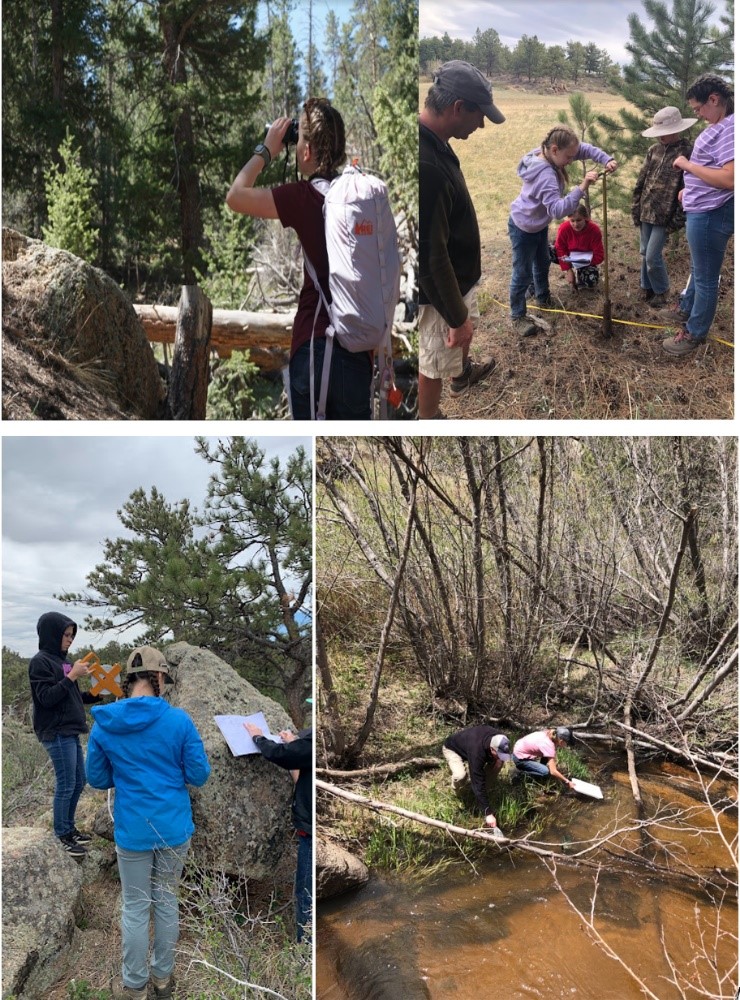
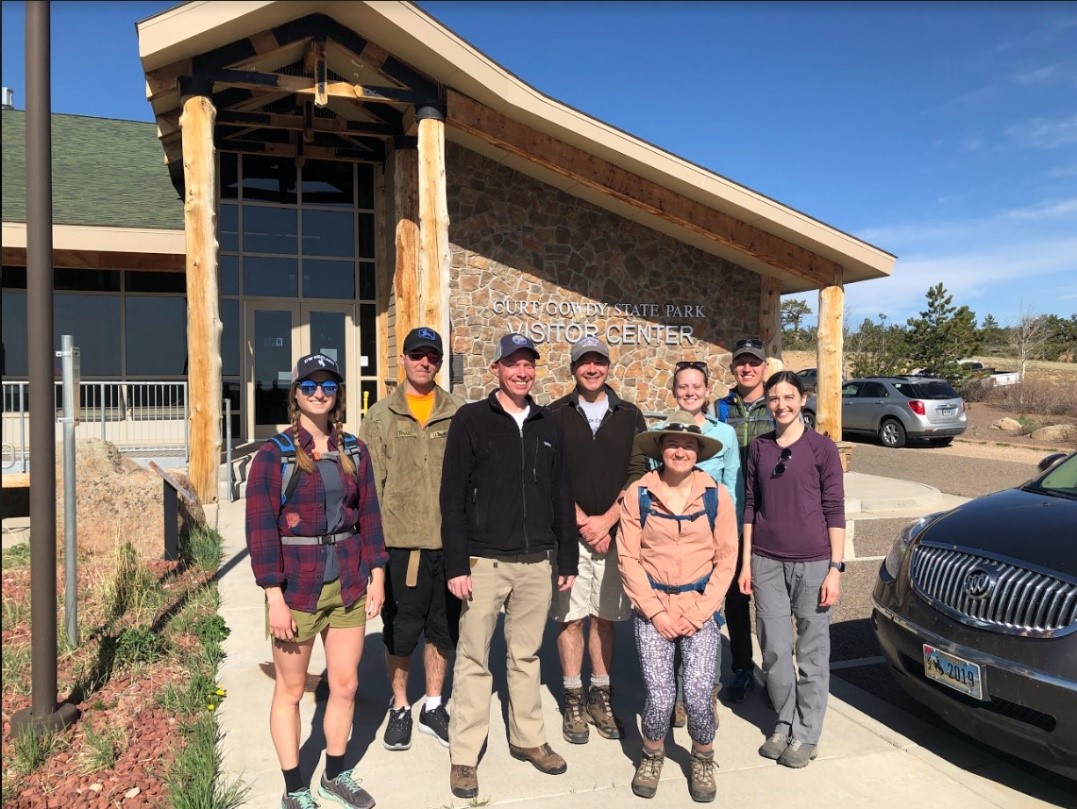
Teen Science Café: Athletic Training - Laramie
Four Laramie teens learned about the career path of becoming an Athletic Trainer on Saturday, May 21st as part of the final Teen Science Café this academic year. UW Athletic Trainer Jenn Knerr led the café and discussed her career journey and studies related to her degree. Students were able to ask questions and talk about the steps towards pursuing a career in the field. Jenn then led an interactive demonstration explaining the different planes of the human body and anatomical terminology. We expanded on this learning by cutting gummy bears through the anatomical planes to demonstrate the concepts. Jenn then had everyone on the floor learning a new trick to increase stretching!
Roadshow Team:
Katie Davis (Graduate Student Ecology)
Karagh Brummond (Faculty Science Initiative & Honors College)
